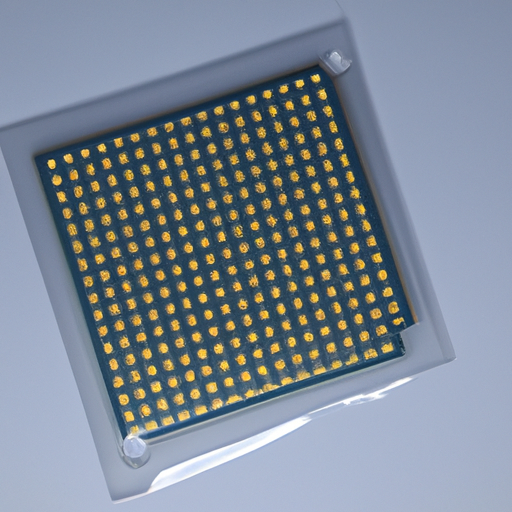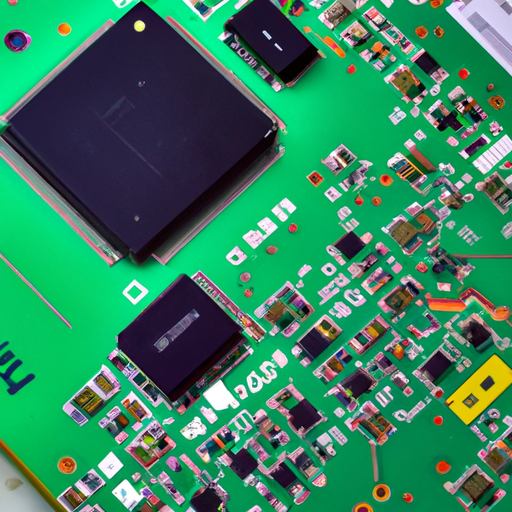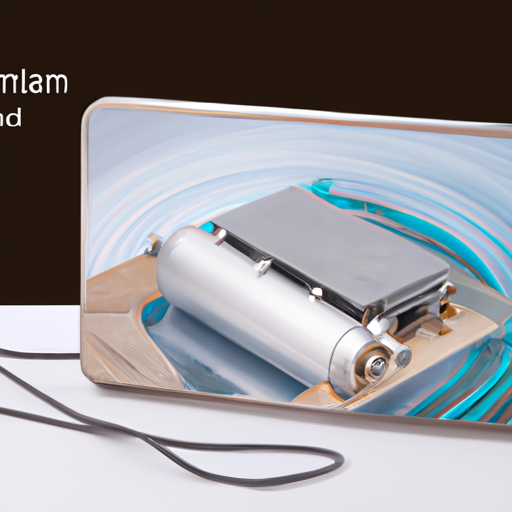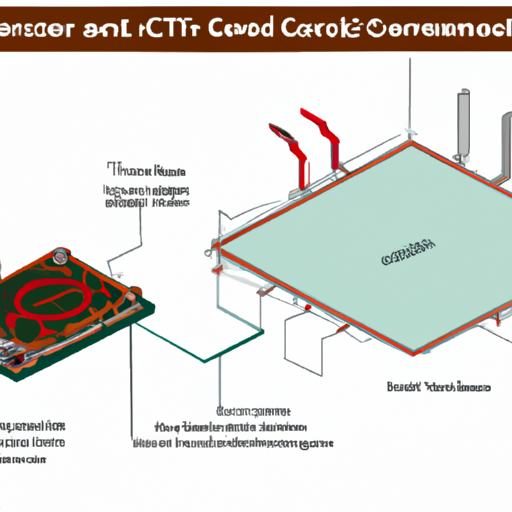The latest integrated circuit packaging specifications
The Latest Integrated Circuit Packaging Specifications
I. Introduction
Integrated Circuit (IC) packaging is a critical aspect of modern electronics, serving as the bridge between the semiconductor chip and the external environment. It not only protects the delicate silicon die but also facilitates electrical connections and thermal management. As technology advances, the specifications governing IC packaging have evolved significantly, reflecting the growing demands for performance, miniaturization, and sustainability in electronic devices. This blog post will explore the latest specifications in IC packaging, tracing their historical context, current trends, and future directions.
II. Historical Context
A. Brief History of IC Packaging
The journey of IC packaging began in the 1960s with early techniques such as dual in-line packages (DIPs) and through-hole technology (THT). These methods were relatively simple, allowing for easy assembly and repair. However, as the demand for smaller and more powerful devices grew, the industry transitioned to more advanced packaging methods, such as surface mount technology (SMT) in the 1980s. This shift enabled manufacturers to place components directly onto the surface of printed circuit boards (PCBs), significantly reducing the size of electronic devices.
B. Key Milestones in IC Packaging Development
Several milestones have marked the evolution of IC packaging. The introduction of Ball Grid Array (BGA) packaging in the 1990s allowed for higher pin counts and improved thermal performance. The advent of System-in-Package (SiP) technology in the early 2000s further revolutionized the industry by integrating multiple ICs into a single package, enhancing functionality while minimizing space. These developments laid the groundwork for the sophisticated packaging solutions we see today.
III. Current Trends in IC Packaging
A. Miniaturization and Its Impact
The relentless pursuit of smaller devices has driven significant advancements in IC packaging technology. Consumers demand compact smartphones, wearables, and IoT devices, prompting manufacturers to innovate continuously. Techniques such as 3D packaging, which stacks multiple chips vertically, have emerged as a solution to meet these demands without compromising performance.
B. Increased Performance Requirements
As electronic devices become more powerful, the performance requirements for IC packaging have also escalated. Thermal management has become a critical concern, as high-performance chips generate more heat. Advanced packaging solutions now incorporate heat spreaders, thermal interface materials, and innovative designs to ensure efficient heat dissipation. Additionally, electrical performance is paramount; specifications related to impedance, capacitance, and signal integrity are closely monitored to prevent data loss and ensure reliable operation.
C. Sustainability and Environmental Considerations
With growing awareness of environmental issues, sustainability has become a focal point in IC packaging. Manufacturers are increasingly adopting eco-friendly materials and processes to reduce their carbon footprint. The use of recyclable materials and the implementation of waste management strategies are now integral to packaging design. This shift not only addresses environmental concerns but also aligns with consumer preferences for sustainable products.
IV. Types of Integrated Circuit Packaging
IC packaging comes in various forms, each suited to specific applications and performance requirements:
A. Through-Hole Technology (THT)
THT involves inserting leads of components through holes in a PCB and soldering them in place. While largely replaced by SMT in many applications, THT is still used for high-power components and in situations where durability is essential.
B. Surface Mount Technology (SMT)
SMT allows for the mounting of components directly onto the surface of PCBs, enabling higher component density and reduced size. This technology has become the standard for most modern electronic devices.
C. Ball Grid Array (BGA)
BGA packages feature an array of solder balls on the underside, providing excellent electrical performance and thermal management. They are commonly used in high-performance applications, such as CPUs and GPUs.
D. Chip-on-Board (COB)
COB technology involves directly bonding the die to the PCB, allowing for compact designs and reduced interconnect lengths. This method is often used in applications where space is at a premium.
E. System-in-Package (SiP)
SiP integrates multiple ICs and passive components into a single package, offering enhanced functionality and reduced size. This technology is particularly popular in mobile devices and IoT applications.
F. 3D Packaging Technologies
3D packaging involves stacking multiple chips vertically, allowing for greater integration and reduced footprint. This approach is gaining traction as the demand for high-performance, compact devices continues to rise.
V. Key Specifications in IC Packaging
A. Mechanical Specifications
Mechanical specifications are crucial for ensuring the physical integrity of IC packages. Key factors include dimensions, tolerances, and material properties. Manufacturers must adhere to strict guidelines to ensure compatibility with assembly processes and end-use applications.
B. Electrical Specifications
Electrical specifications focus on the performance of the package in terms of impedance, capacitance, and signal integrity. These parameters are critical for maintaining reliable communication between components and preventing data loss.
C. Thermal Specifications
Thermal specifications address the package's ability to dissipate heat generated by the IC. Key metrics include thermal resistance and heat dissipation techniques, which are essential for maintaining optimal operating temperatures and preventing thermal failure.
D. Reliability Specifications
Reliability is paramount in IC packaging, as failures can lead to significant costs and safety concerns. Testing standards from organizations like JEDEC and IPC provide guidelines for assessing package reliability, including failure rate metrics and environmental testing protocols.
VI. Industry Standards and Guidelines
A. Overview of Relevant Standards Organizations
Several organizations play a vital role in establishing standards for IC packaging. JEDEC (Joint Electron Device Engineering Council) focuses on semiconductor standards, while IPC (Institute for Printed Circuits) develops standards for PCB manufacturing and assembly. ISO (International Organization for Standardization) provides broader guidelines applicable across various industries.
B. Recent Updates to Packaging Standards
The rapid pace of technological advancement necessitates regular updates to packaging standards. Recent revisions have addressed emerging technologies, such as 3D packaging and advanced materials, ensuring that standards remain relevant and effective.
C. Importance of Compliance with Standards
Compliance with industry standards is essential for manufacturers to ensure product quality, reliability, and safety. Adhering to established guidelines not only enhances customer trust but also facilitates global trade by ensuring compatibility across different markets.
VII. Future Directions in IC Packaging
A. Emerging Technologies
The future of IC packaging is poised for exciting developments. Advanced materials, such as graphene and organic substrates, are being explored for their potential to enhance performance and reduce environmental impact. Additionally, the integration of AI and machine learning in design processes is expected to streamline packaging development and optimize performance.
B. Predictions for Future Packaging Trends
Looking ahead, we can anticipate an increased focus on 3D packaging as manufacturers seek to maximize integration and minimize size. Sustainability will also remain a key driver, with a growing emphasis on eco-friendly materials and processes. As the demand for high-performance, compact devices continues to rise, the evolution of IC packaging will play a crucial role in shaping the future of electronics.
VIII. Conclusion
In summary, IC packaging is a vital component of modern electronics, influencing performance, reliability, and sustainability. The latest specifications reflect the industry's response to evolving demands, from miniaturization to environmental considerations. As we look to the future, continued innovation in IC packaging will be essential for driving advancements in technology and meeting the needs of consumers. The call to action is clear: the industry must embrace new materials, technologies, and sustainable practices to ensure that IC packaging remains at the forefront of electronic development.
IX. References
- Academic Journals, Articles, and Industry Reports on IC Packaging
- Relevant Standards Documentation from JEDEC, IPC, and ISO
- Additional Reading Materials on IC Packaging and Emerging Technologies
This comprehensive overview of the latest integrated circuit packaging specifications highlights the importance of this field in the ever-evolving landscape of electronics. As technology continues to advance, staying informed about these specifications will be crucial for industry professionals and enthusiasts alike.





